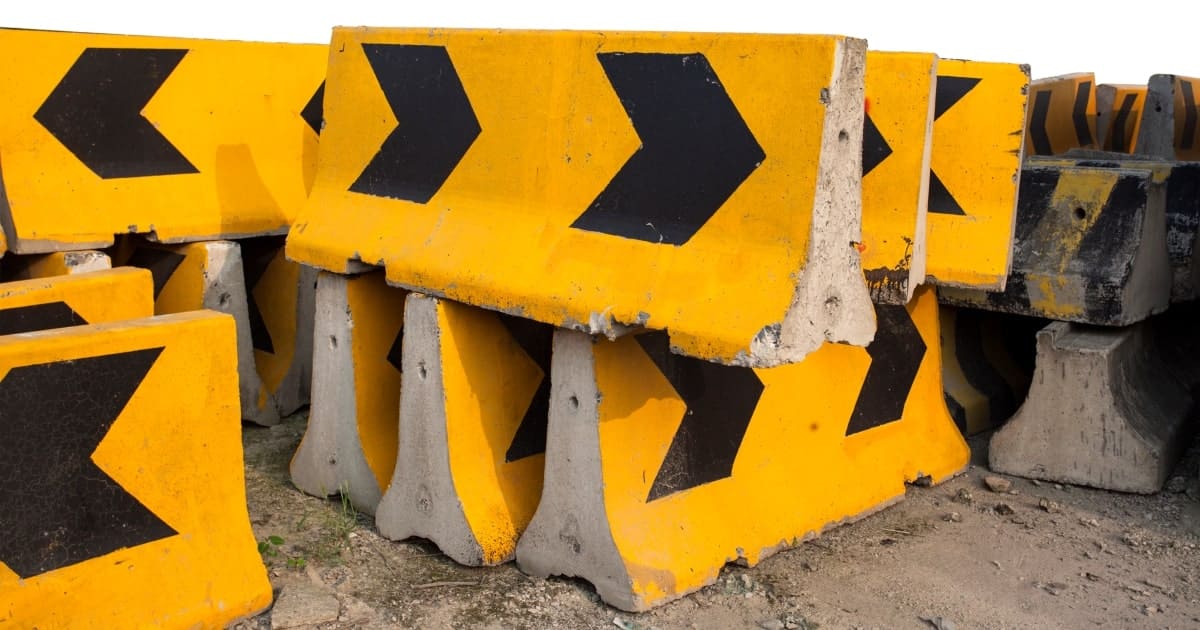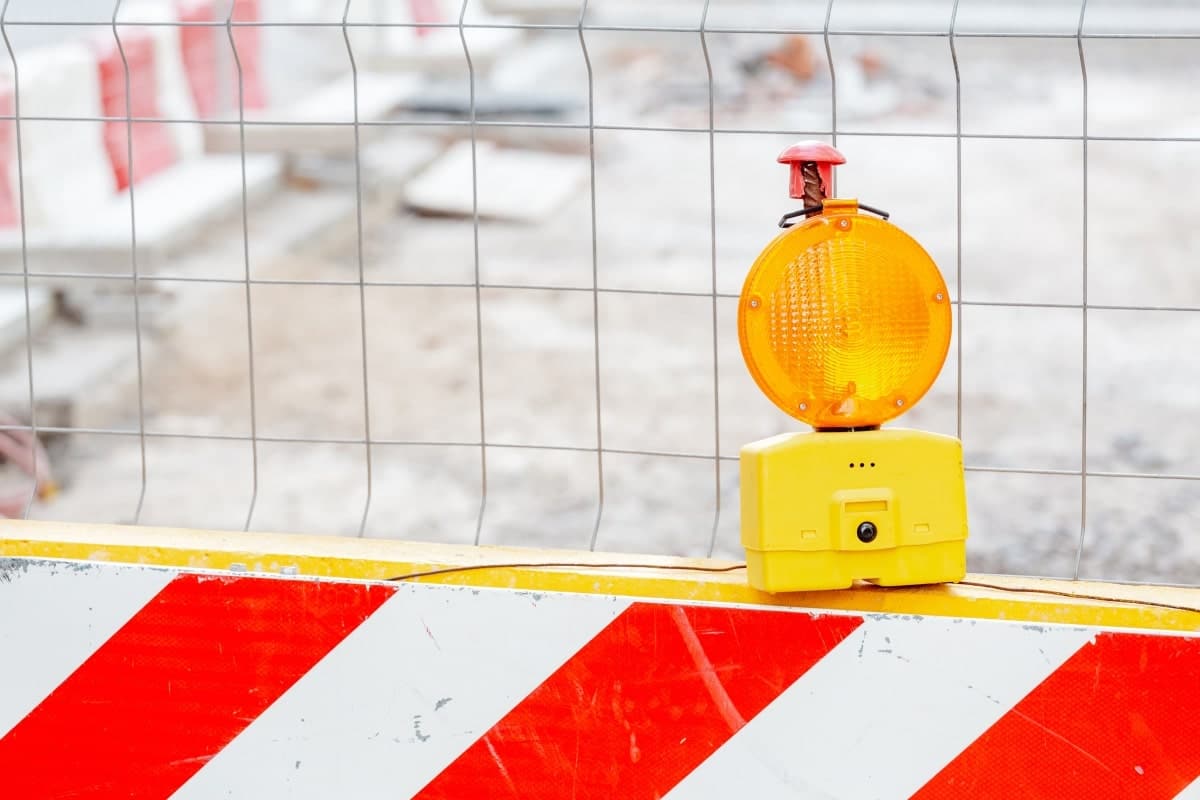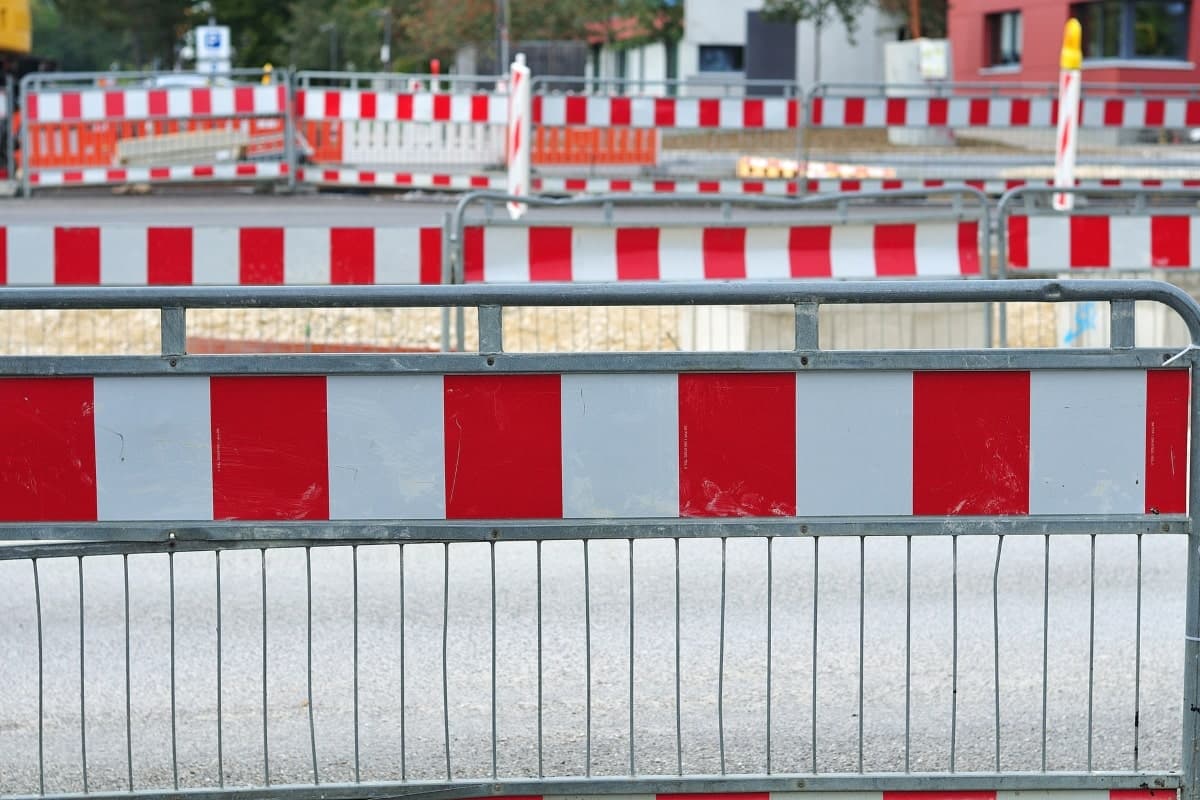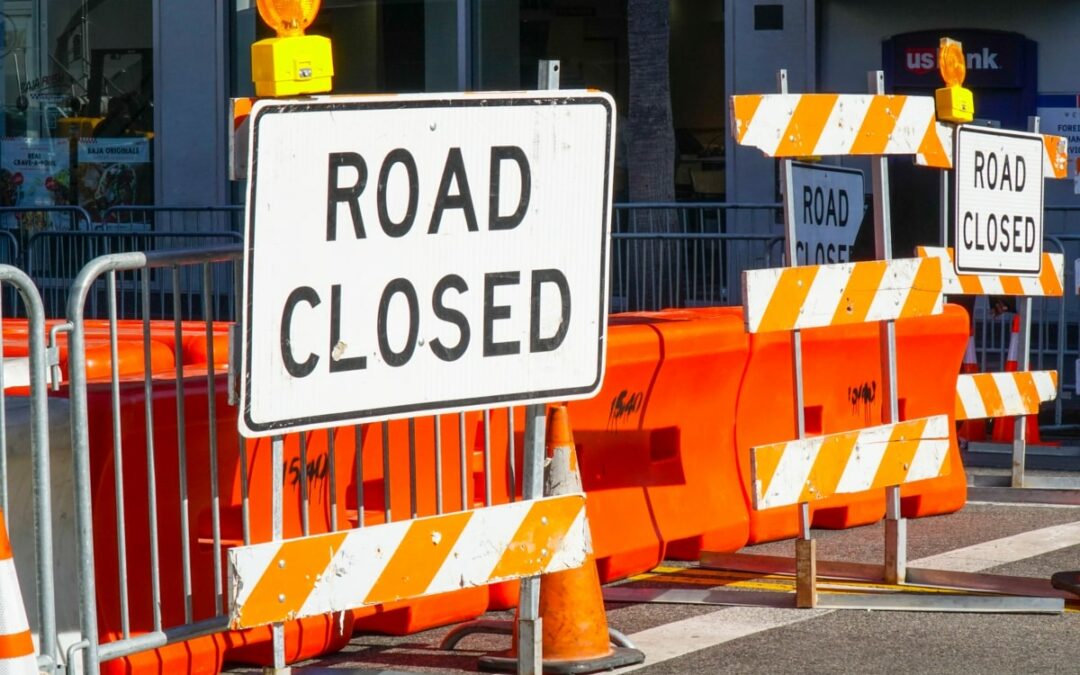Barricades are essential safety measures on Australian construction sites, providing security, organisation, and efficiency. Barricading also plays a critical role in commercial businesses and builder environments, helping to promote safety and prevent injuries.
In this article, we’ll discuss the various types of barricades and temporary barriers used in construction and the best practices for installing and maintaining them. We’ll also look at factors to consider when choosing suitable barricades for your specific needs.
The importance of barricading in construction
Barricading is a critical safety measure that must be taken seriously on any construction site. Every year, the construction industry in Australia sees about 12,600 workers’ compensation claims accepted, with an average of 35 serious claims each day.
Injury prevention is one of the most significant reasons for using barricades. Barricades help protect your workers and the general public from potential construction site hazards such as moving machinery, unsafe materials, and falling objects. Using appropriate barriers can prevent accidents and injuries, keeping everyone on the site away from potential dangers.
Beyond keeping workers and the public safe, there are specific requirements that construction companies must meet when it comes to barricading in Australia. You must meet these requirements to avoid legal consequences and protect yourselves from liability. Safe Work Australia offers standards and guidelines for construction industry professionals.
Site security is another vital aspect. You can use barriers to secure the worksite and prevent unauthorised access, helping to protect your valuable gear from would-be thieves while keeping passers-by safe. Additionally, by controlling access to the site, you can deter vandals from damaging your property.
Efficiency is also an important factor when barricading job sites. By using barricades, you can better organise and manage the site. They create work zones, restrict access to certain parts of the site, and direct traffic. This can result in a more efficient workflow, reducing downtime and increasing productivity.
Types of barricades in construction
When it comes to construction sites, safety is of utmost importance. Barricades are physical barriers that play a crucial role in ensuring the safety of workers and the public. There are various types of barricades used in construction areas, each serving a unique purpose:
Traffic barricades are one of the most common types of barricades found in construction areas. They are designed to redirect traffic and pedestrian foot traffic. Typically made of steel or concrete, traffic barriers can withstand the impact of a vehicle and are essential for traffic management and safety on busy sites.

Temporary barricades are also commonly used in construction areas. These portable barricades are made of lightweight materials such as plastic or wood and can be easily moved from one location to another. They are ideal for creating temporary barriers around work areas and preventing unauthorised access.
Barricades are used to protect construction workers and the public from hazards that may be present in a construction area. These barricades are typically made of wood, steel, or plastic and are designed to be durable and long-lasting. Construction barricades can also be used to create temporary walkways or pedestrian areas.
Finally, road barricades control traffic flow and ensure the safety of drivers and pedestrians. Made of highly visible materials, road and pedestrian barriers are essential for traffic control and safety on sites near roads or highways.
Barricading best practices

To get the most out of construction barricades, businesses and builders should follow some best practices:
Proper installation
Proper installation of barricades is critical to their effectiveness. Barricades should be installed in a way that effectively blocks off hazardous areas and directs traffic flow. They must also be securely anchored to the ground to prevent them from being moved by wind or other forces. If barricades are not installed correctly, they may not serve their intended purpose and can even pose additional safety hazards.
Inspections and maintenance
Regular inspections and maintenance are also essential to ensure that barricades are effective and safe. Barricades should be inspected regularly for signs of wear and tear, such as cracks, breaks, or loose components. The barricade should be repaired or replaced immediately if any damage is found. Regular maintenance can help ensure that barricades remain effective and safe for everyone on the site.
Clear signage
Proper barrier signage can help prevent accidents and injuries by alerting workers and the public to potential hazards. Signage should be clear and easy to understand, indicating the nature of the hazard and the appropriate safety measures to be taken. Construction safety signs should be placed in a highly visible location so that anyone on the site can easily see it.
Compliance with laws and guidelines
Finally, adherence to local regulations and guidelines is crucial when barricading construction sites. Different states have different standards regarding the use of barricades. Businesses and builders must comply with all relevant rules to avoid legal and financial consequences.
Choosing the right barricades

Choosing the right barricades is crucial for ensuring the safety and efficiency of your construction site. To find the most appropriate barricades for your needs, consider the following factors:
- First, think about the nature of your construction project. Different types of barricades are suitable for different kinds of projects. For example, traffic barriers work well for road construction projects, while hard barricading might be better suited for building construction projects.
- In addition, consider your environment. Are you beside a road? Will your site experience heavy foot traffic? Choosing the correct type of barricade for your project ensures you have the most effective and appropriate tool for the job.
- Next, take your budget into account. While choosing barricades that meet the necessary safety requirements is important, you also need to consider your budget. Many different types of barricades are available, ranging from inexpensive plastic barricades to robust galvanised steel barricades. Careful consideration of your budget can help you find the most cost-effective solution that meets your needs.
- Durability and quality are also critical factors when selecting suitable barricades. Your barricades must withstand harsh environmental conditions, including wind, rain, and extreme temperatures.
- Additionally, they must be able to hold up against impact from vehicles and heavy equipment. By choosing high-quality and durable barriers, you can ensure that they will last for the duration of your project and effectively serve their intended purpose.
Key takeaways
In conclusion, barricading is a crucial safety measure for any construction site. By utilising the appropriate barricades, following best practices, and adhering to safety guidelines and Australian standards, you can help promote safety and efficiency on your construction site.
To ensure that your construction site is secured correctly, it’s essential to assess your current barricading strategies and make necessary improvements to align with industry standards and expectations.
TTFS construction barricades and temporary barriers
At TTFS, we offer a wide variety of barricades to suit your specific needs, including temporary barricades, crowd control barriers, road barriers, and construction barricades.
Contact us today to learn more about how our barricades and temporary fencing can help improve safety and efficiency on your construction site. Our friendly team is available to answer any questions you might have.


Recent Comments